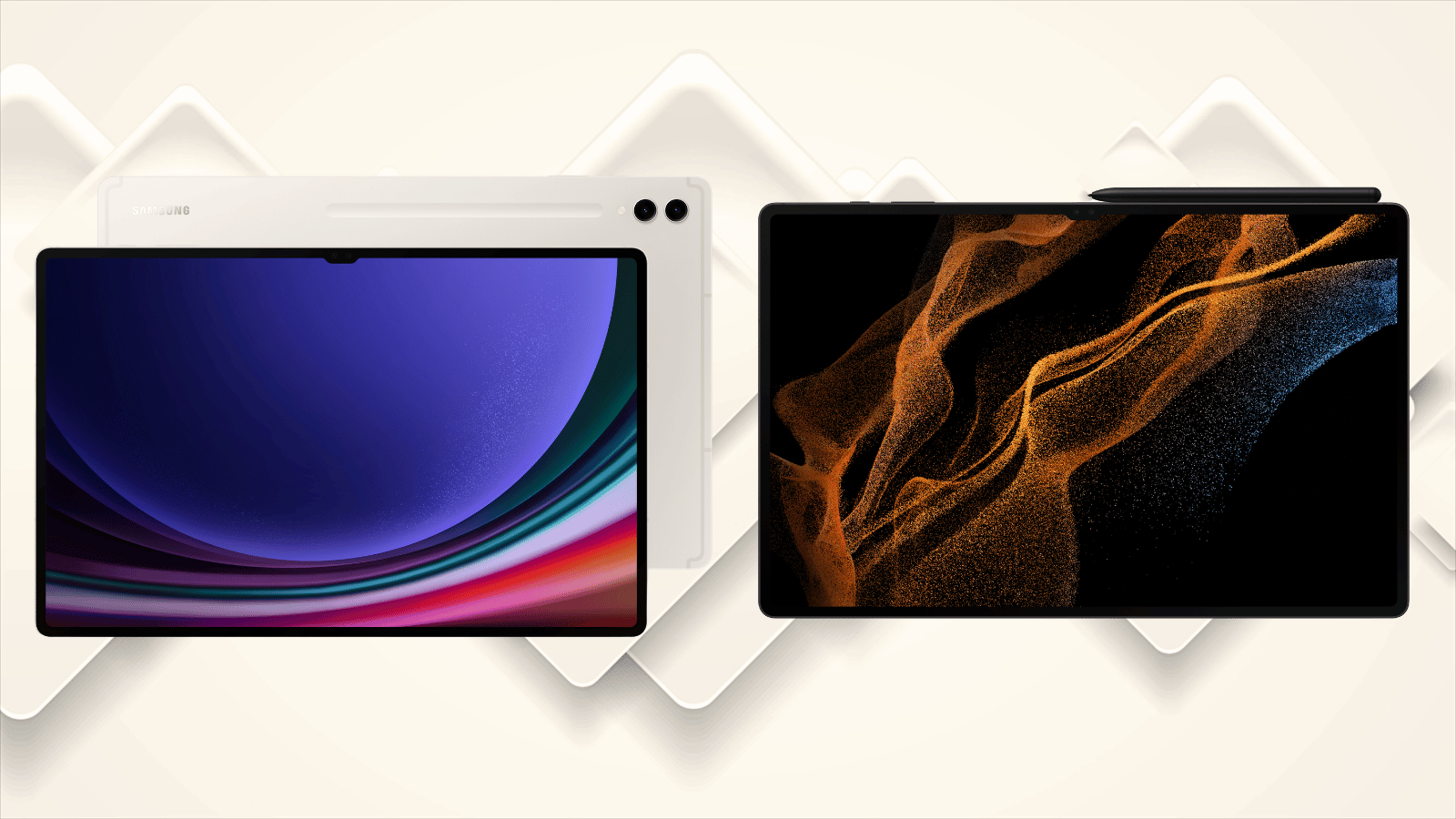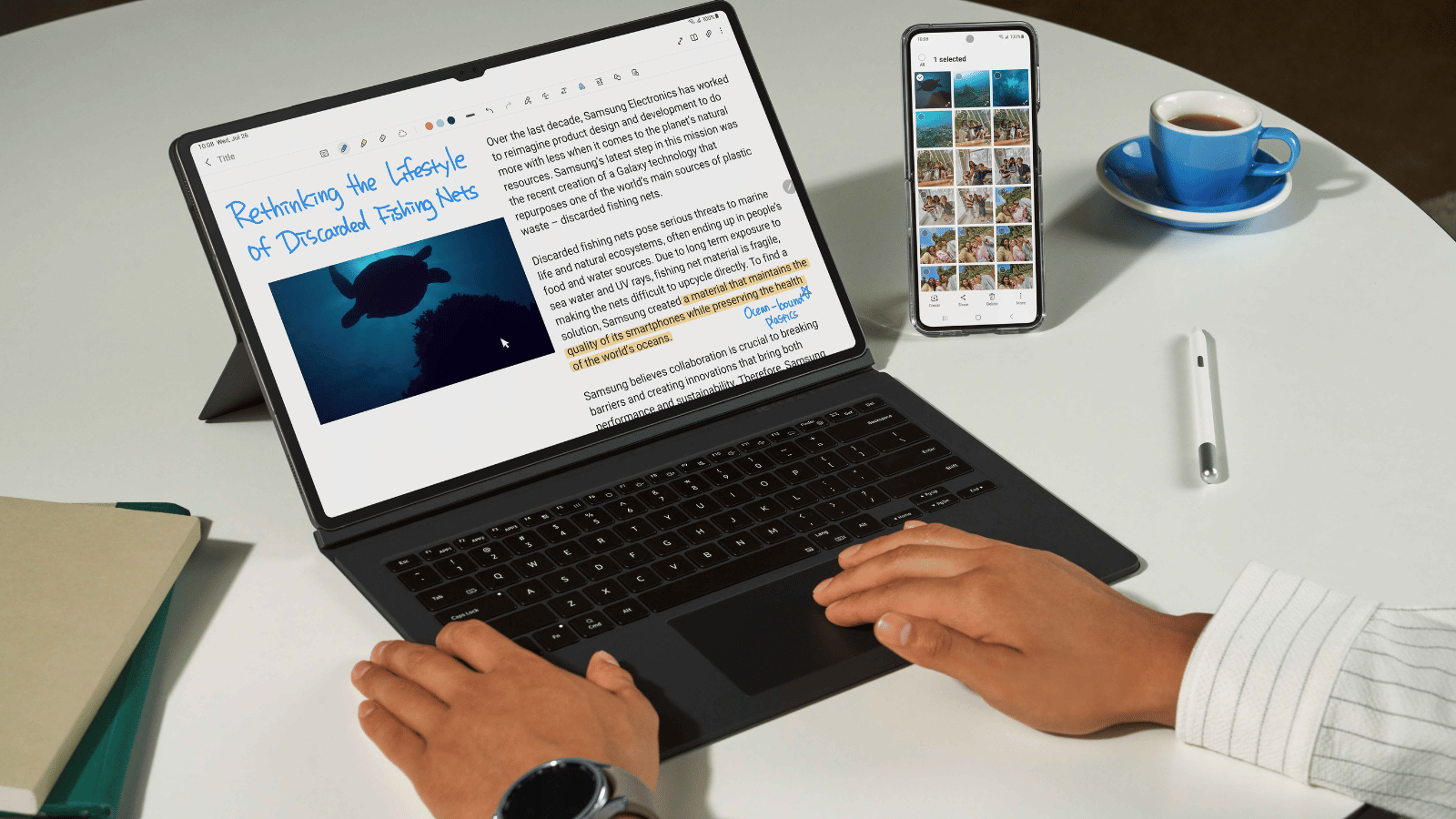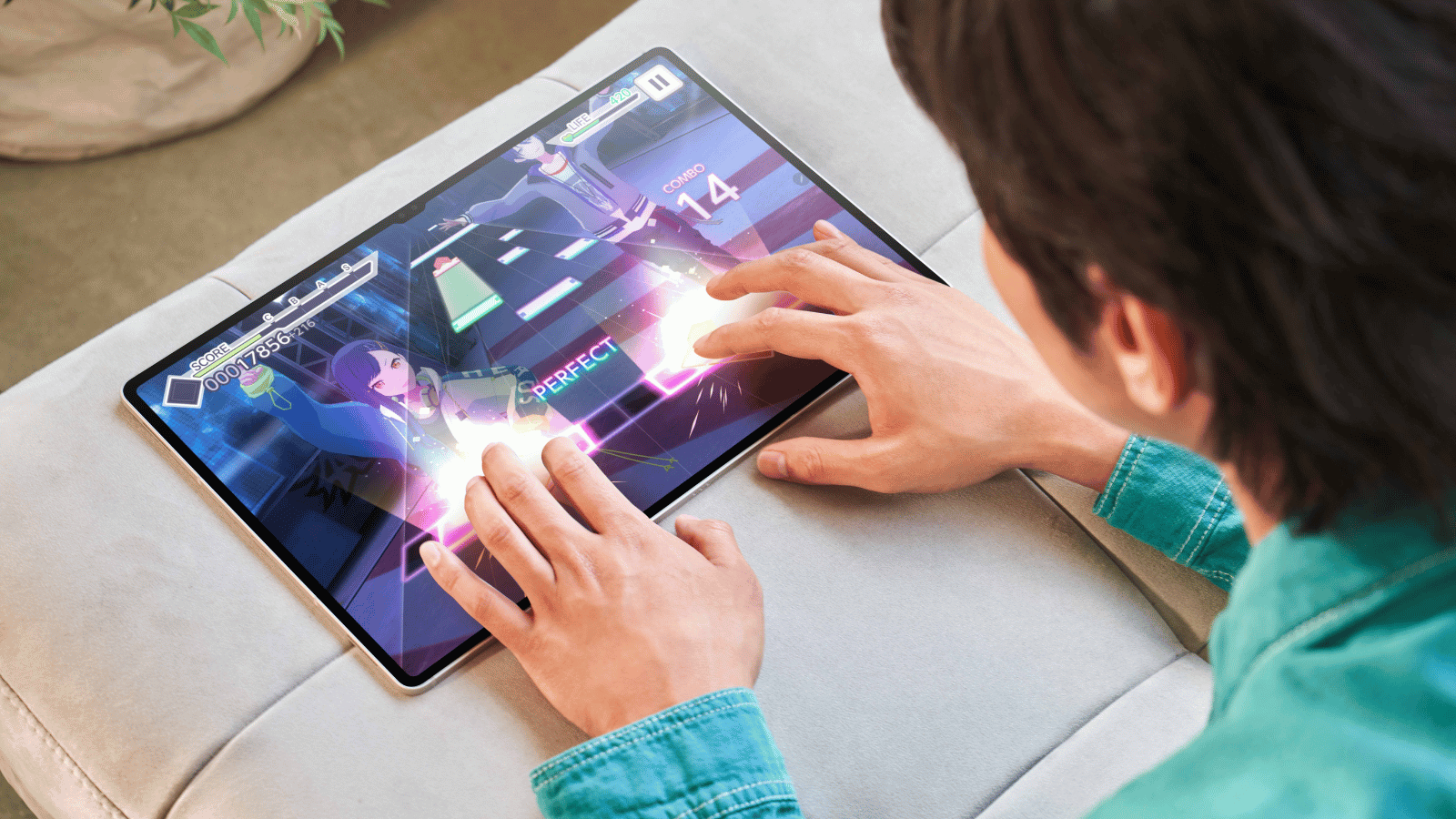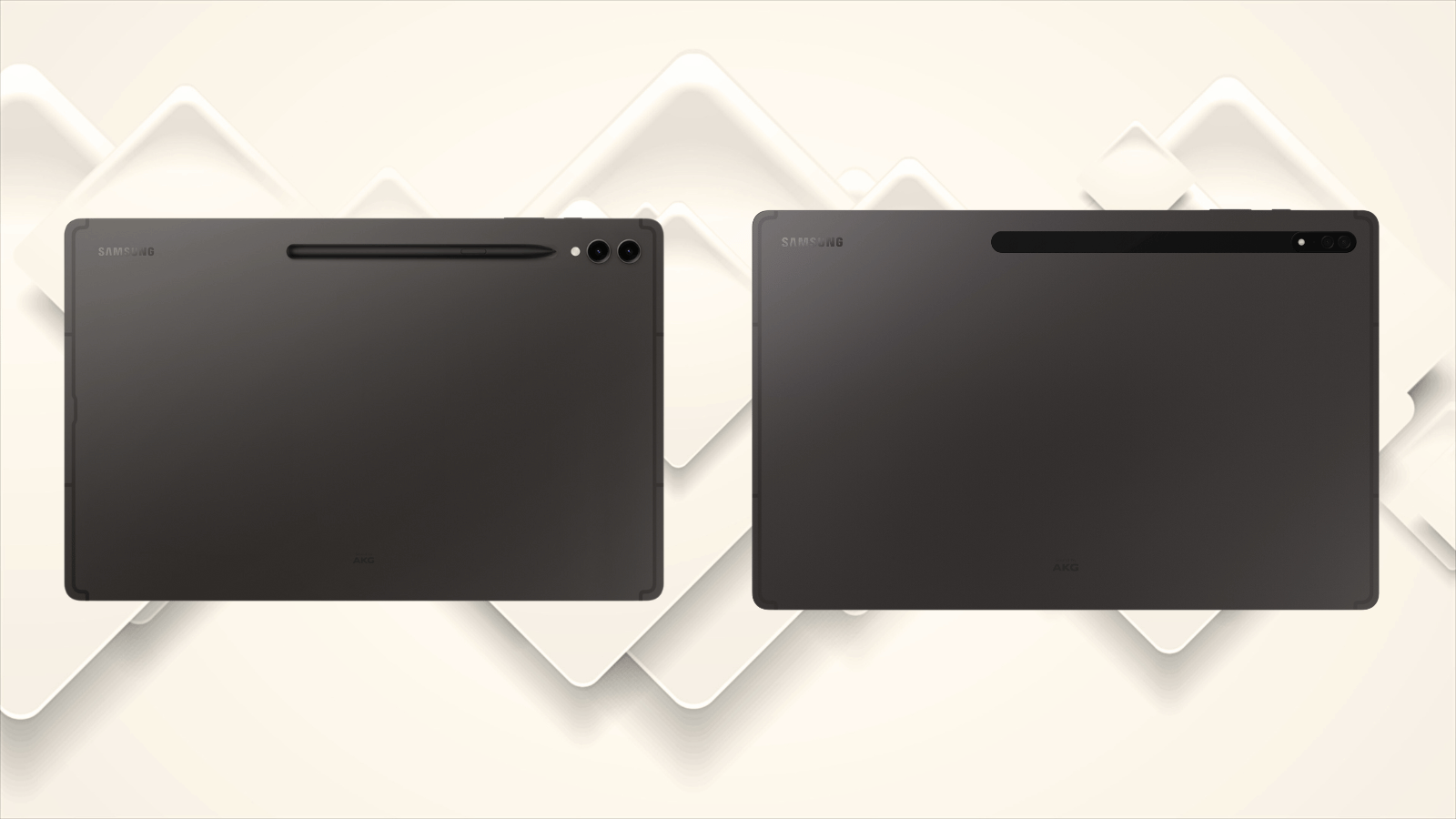Anyone not paying attention yesterday – or just out getting their daily source of Vitamin D – might’ve missed Samsung unveiling of a slew of new products. Those included two new smartphones that’ll flip or fold, a couple of watches and three new Galaxy Tabs of the S9, S9+ and S9 Ultra varieties. The last of those, the Galaxy Tab S9 Ultra, is Samsung’s most expensive yet. At R33,000, it could scare off plenty of unsure buyers.
Is it worth making the leap to Samsung’s latest effort? Well, that depends on what matters most to you, the budget you’re working with, and your proclivity toward FOMO. We dug into the specs of both the S8 Ultra and the S9 Ultra to help you make the decision that might impact you making rent for the month.
Surface-level visuals

Don’t feel bad: we’re guessing even Samsung’s own employees would struggle to tell the difference between the S8 Ultra and its latest offering. That doesn’t mean Samsung hasn’t made any changes to the S9 Ultra. They’re just… hardly distinguishable to the naked eye, aside from the slightly altered camera array and the addition of a new colour, Beige, joining the S8 Ultra’s only shade: Graphite.
The changes you can’t see come in the form of durability, with the S9 Ultra featuring an official IP68 rating, a feature that was missing from last year’s lineup. It’s a small change, but one that’ll massively improve the S9 Ultra’s lifespan, especially if you’re prone to dropping R33,000 tablets willy-nilly. For us, that’s a win.
Winner: Galaxy Tab S9 Ultra
Dynamic displays

When it comes to the Tab S8 Ultra’s display, there’s absolutely nothing wrong here. It’s sporting a 14.6in 1,848x 2,960 AMOLED screen which is already larger than many laptops, HDR10+, 120Hz and a slightly disappointing 500-nit peak brightness. Still, for most, that’s enough.
While the S9 Ultra’s size and resolution are the same, Samsung has swapped out that AMOLED panel for a slightly more competent AMOLED 2X panel that’s capable of a 60-120Hz variable refresh rate, and vastly improved 930 nits of peak brightness that’s helped along by something called Vision Booster. That gives users a little more room to work with, but not enough to justify the price tag.
Winner: Galaxy Tab S8 Ultra
Delving deeper

If you’re not too fussed with looks, OLED panels and IP86 ratings and just want something that’ll boot up Minecraft a little quicker, you’ll be swayed here. The Galaxy Tab S9 Ultra is harbouring the Qualcomm Snapdragon 8 Gen 2 ‘for Galaxy’ chipset you’d find in Samsung’s flagship smartphones. Supposedly, these are better than Qualcomm’s regular chipset of the same name, due to a partnership between the two. We found the chipset to be a winner in the S23 lineup, and we expect the same to be true here.
Don’t care about gaming? The Tab S8 Ultra’s Qualcomm Snapdragon 8 Gen 1 is nothing to scoff at. It remains one of the more powerful tablets out there that isn’t packing Apple’s technology inside. The most notable differences between the old and the new are a smoother gaming experience, added ray tracing functionality (in supported games), and some power efficiency benefits. But we’ll get to that. Really, you can’t go wrong with either, unless you’re a massive gamer without a PS5 to play on.
Also boosting the performance of the Tab S9 Ultra are improved RAM and storage options, with Samsung making the switch to DDR5X RAM to make all its new models fly. Unfortunately, South Africa won’t be seeing the top-end 16GB/1TB models and will have to live with 12GB of RAM and 256GB of storage. Still, considering the new RAM and buffed-up processor, we’ll slot this in the win column for the Tab S9 Ultra.
Winner: Galaxy Tab S9 Ultra
Charge ‘er up

If you’re taking both tablets at face value when it comes to battery life, it might look as though they’re tied, due to both shipping with the same 11,200mAh batteries inside. But there’s more to Samsung’s decision not to up battery capacity than meets the eye.
That decision has to do with the Tab S9 Ultra’s new chipset, the ‘Snapdragon 8 Gen 2 ‘for Galaxy’ we mentioned earlier. Qualcomm claims the devices powered by its ‘for Galaxy’ Gen 2 chipset will see “40% better power efficiency.” We haven’t had the chance to test out those claims, but if you’re planning on keeping your Tab at home, the Tab S8 Ultra’s battery will do you just fine. But if it’s an on-the-go device you’re after, the Tab S9 Ultra offers better value for money.
Winner: Galaxy Tab S9 Ultra
Hit me with those Flashbulb Eyes
Perhaps the least important feature of any tablet is its camera. The Tab S8 Ultra is rocking one of the best cameras for a tablet out there, again, discounting Apple’s own efforts. That means a 13MP rear shooter accompanied by a 12MP front-facer.
Not much has changed on the Tab S9 Ultra, apart from the minuscule addition of an 8MP rear ultrawide compared to the previous Tab’s 6MP ultrawide. Sure, there’s a boost in the latest Tab’s imaging functionality, but when you’re working with 12MP and 13MP sensors, the difference is negligible.
Winner: Galaxy Tab S8 Ultra
Galaxy Tab S9 Ultra vs Galaxy Tab S8 Ultra verdict

When it comes down to it, there’s not much difference between Samsung’s Tab S8 and S9 Ultra. Unless you care about the upgraded chipset that’ll be most noticeable to power-hungry users and gamers or the 8MP ultrawide sensor. There is a case to be made for the improved battery life, but it’s a change that won’t be noticed unless you’re often out and about.
That might sound like we’re favouring Samsung’s 2022 efforts, but when you examine both prices, it’s clear that the Tab S9 Ultra hands out a better value for what you’re paying. If you already have a Tab S8 Ultra on hand, which averages a price point of R28,000 today, you don’t need to make the upgrade right away. If you don’t have one of Samsung’s headline tablets in your home, the R33,000 price tag for a new Tab S9 Ultra is nothing to scoff at but it’ll justify the cost.




